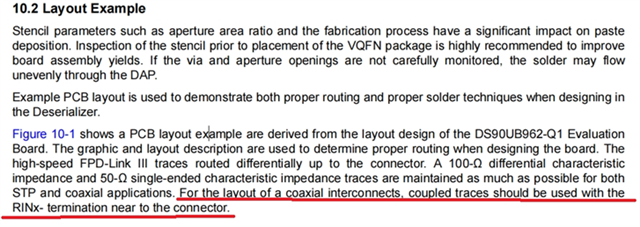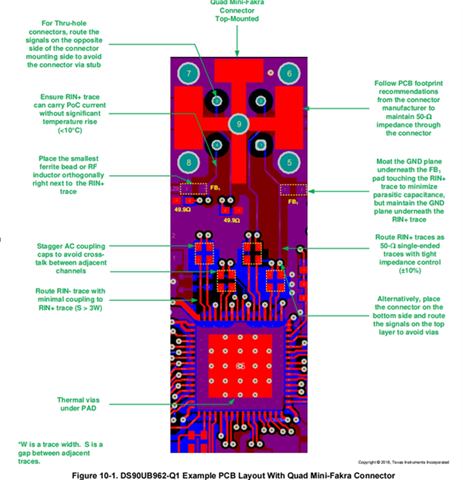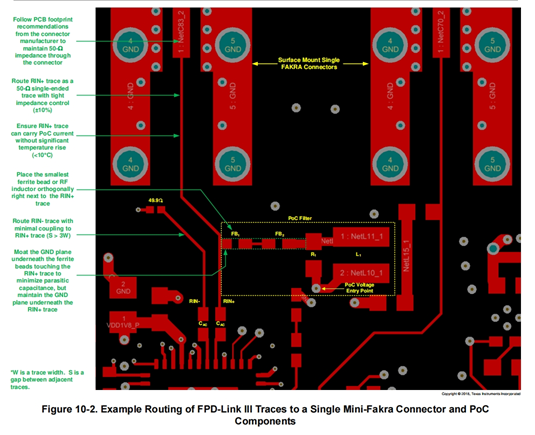Hi Team,
I found out that datasheet require RINX- to be placed close to the connector, and it is loosely coupled with RINX+. Customer use a single-ended signal. Why can the loose coupling pull the signal so far and close to the connector to increase the anti-interference performance? It seems that differential signals can have a strong anti-interference ability. This loosely coupled method is difficult to have this effect. On the contrary, the long-distance leading RINX- will have additional side effects, and it will be easier to draw out the radiation. It is easier to introduce additional interference. And it seems that the method you use is not of equal length.



could you help to explain, thank you!

